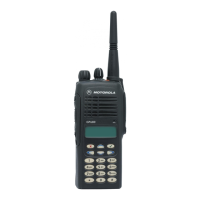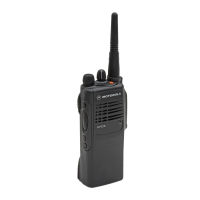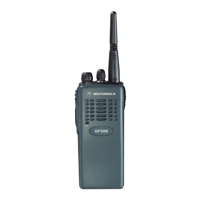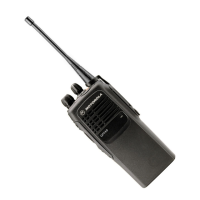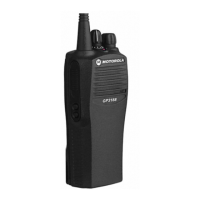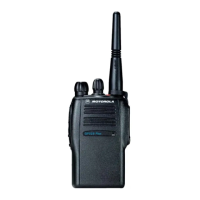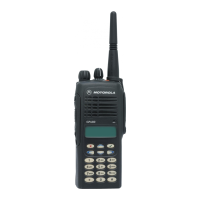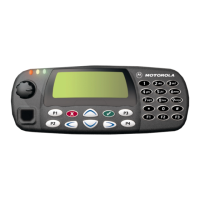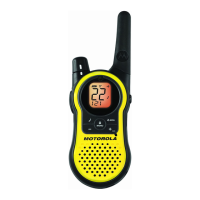Do you have a question about the Motorola GP640 and is the answer not in the manual?
Provides essential tips for charging, caring for, and maximizing rechargeable battery performance.
Instructions for charging batteries, understanding charger LED status, and authorized battery models.
Details how to make calls using the Contact List or Dedicated Calls, including PTT usage.
Describes how to initiate and stop emergency calls, and when the radio may receive them.
Provides instructions for safe and efficient operation, including RF energy exposure guidelines.
Highlights warnings for air bag areas, potentially explosive atmospheres, and battery handling.
Advises turning off the radio near blasting caps or in designated blasting areas for safety.
Provides essential tips for charging, caring for, and maximizing rechargeable battery performance.
Instructions for charging batteries, understanding charger LED status, and authorized battery models.
Details how to make calls using the Contact List or Dedicated Calls, including PTT usage.
Describes how to initiate and stop emergency calls, and when the radio may receive them.
Provides instructions for safe and efficient operation, including RF energy exposure guidelines.
Highlights warnings for air bag areas, potentially explosive atmospheres, and battery handling.
Advises turning off the radio near blasting caps or in designated blasting areas for safety.
| power supply | 7.5 V |
|---|---|
| power 136-174 | 1-5W |
| power 403-470 | 1-4W |
| power 450-527 | 1-4W |
| average battery life with standard high capacity NiMH battery low power | 11 hours |
|---|---|
| average battery life with standard high capacity NiMH battery high power | 8 hours |
| average battery life with ultra high capacity NiMH battery low power | 14 hours |
| average battery life with ultra high capacity NiMH battery high power | 11 hours |
| average battery life with NiCD battery low power | 12 hours |
| average battery life with NiCD battery high power | 9 hours |
| average battery life with Li-lon battery low power | 11 hours |
| average battery life with Li-lon battery high power | 8 hours |
| operating temperature | -20°C to +55°C |
|---|---|
| frequency stability | ±2.5 ppm (-25°C to +55°C, +25°Ref.) |
| sealing | MIL STD 810 C/D/E and IP54 |
| frequencies full bandsplit VHF | 136-174 MHz |
|---|---|
| frequencies full bandsplit UHF 1 | 403-470 MHz |
| frequencies full bandsplit UHF 2 | 450-527 MHz |
| channel spacing | 12.5/20/25 kHz |
| modulation limiting | ±2.5 @ 12.5 kHz, ±4.0 @ 20 kHz, ±5.0 @ 25 kHz |
| FM hum & noise | -40 dB typical |
| sensitivity (12 dB SINAD) EIA | .25 µV typical |
|---|---|
| sensitivity (20 dB SINAD) EN | .50 µV typical |
| intermodulation EIA | 70 dB |
| adjacent channel selectivity | 60 dB @ 12.5 kHz, 70 dB @ 20/25 kHz |
| spurious rejection | 70 dB |
| rated audio | 0.5W |
| dimensions with standard high capacity NiMH battery | 137 x 57.5 x 37.5 mm |
|---|---|
| dimensions with ultra high capacity NiMH battery | 137 x 57.5 x 40.0 mm |
| dimensions with NiCD battery | 137 x 57.5 x 40.0 mm |
| dimensions with Li-lon battery | 137 x 57.5 x 33.0 mm |
| weight with standard high capacity NiMH battery | 420 gm |
| weight with ultra high capacity NiMH battery | 500 gm |
| weight with NiCD battery | 450 gm |
| weight with Li-lon battery | 350 gm |
